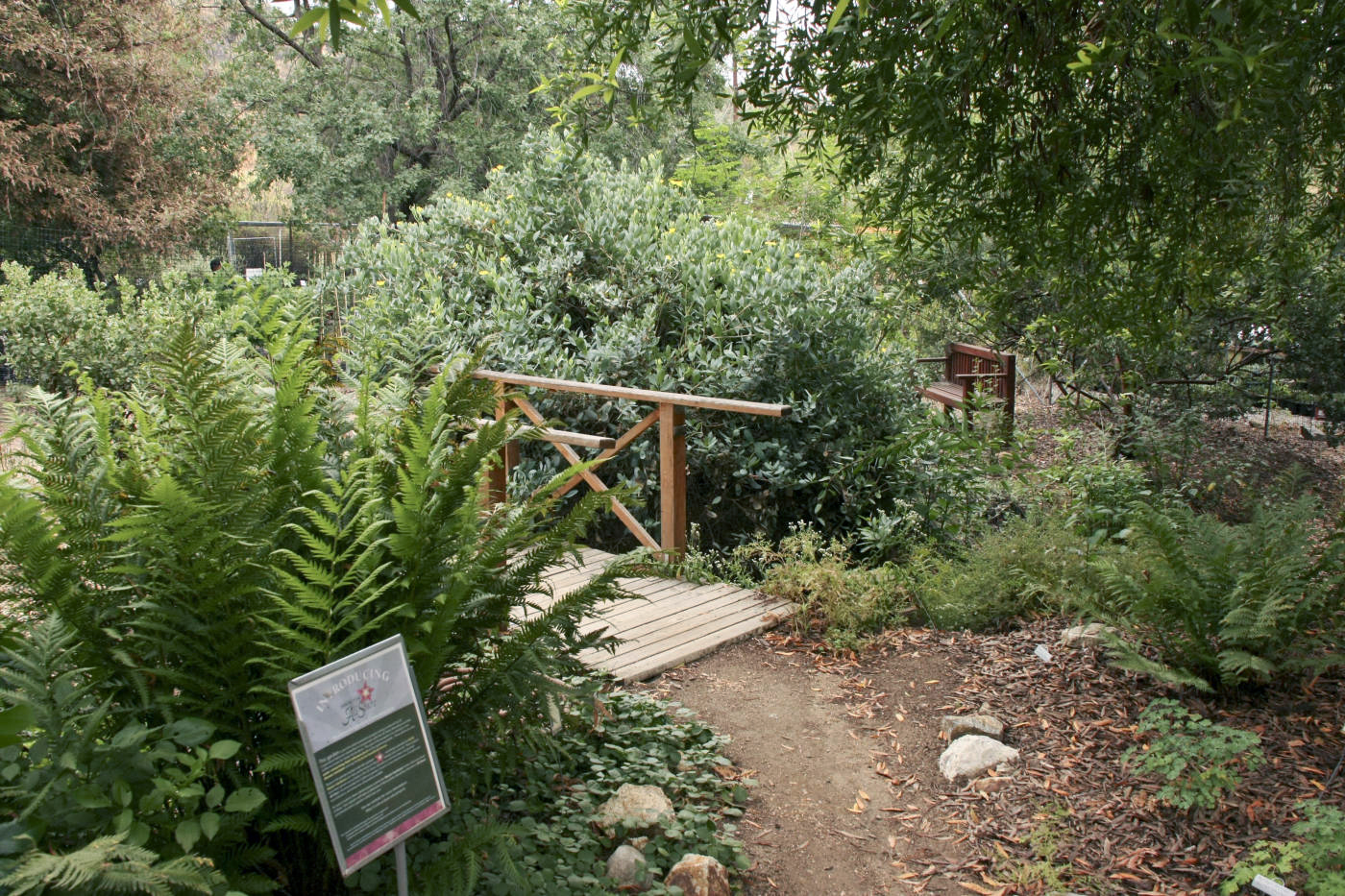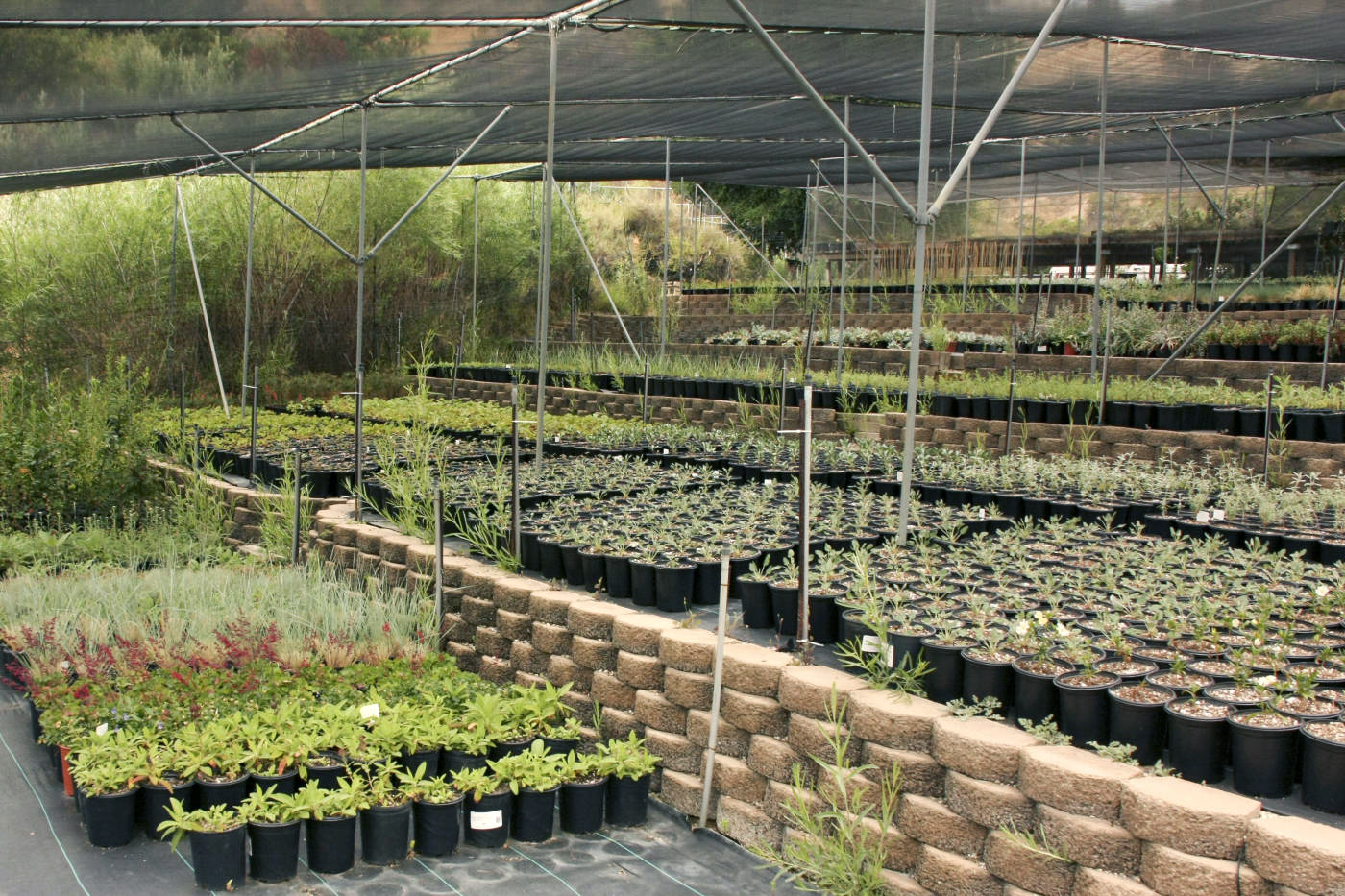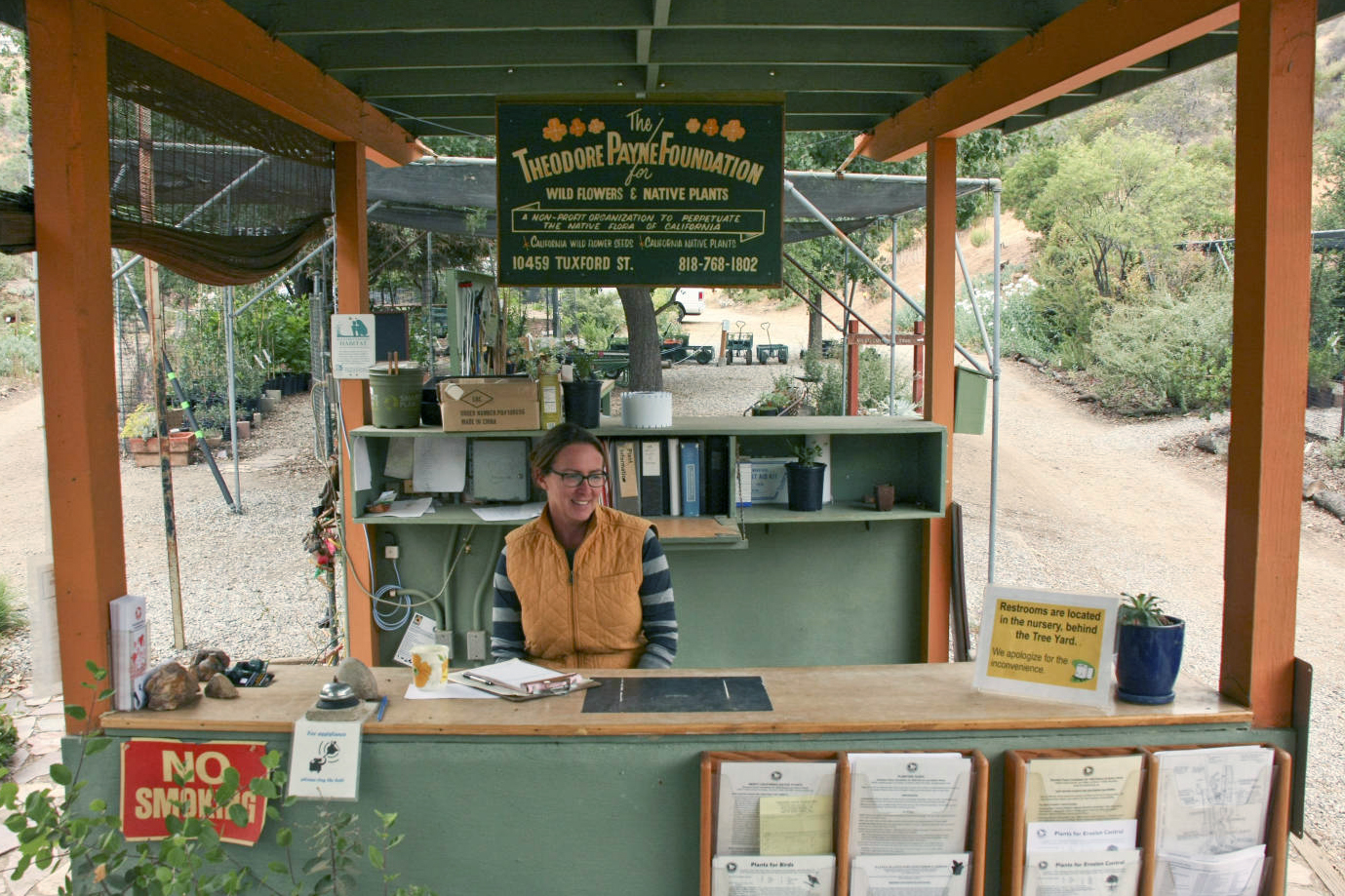
Exploring the Wildflowers of Los Angeles at the Theodore Payne Foundation
Nestled in a small canyon and up a dusty dirt road in the far reaches of northern Los Angeles is a mecca for the sustainable gardner. The Theodore Payne Foundation nursery has been on my radar for what seems like years. The name has snuck into conversations with neighbors about replacing lawns with native plants, been spotted on community flyers promoting garden lectures and workshops, and ranks high as a destination to visit for inspiration to create a more drought-tolerant garden. Here in Southern California we are four years in to a historic drought—it is far past the time to investigate plants for my garden that have the DNA to survive these dry conditions.
Theodore Payne (1872-1963) was an Englishman who fell in love with California’s diverse array of native plants while working at Madame Helena Modjeska’s garden, or “Arden,”—now a historic landmark in Orange County. The Theodore Payne Foundation for Wild Flowers and Native Plants was established in 1960 to continue Theodore’s horticultural passion and has been knee-deep in seeding projects, the propagation of native species and cultivars, educating the public on native plants, expanding their site, and adding to a growing list of inventory ever since.
This may be the reason that the nursery site seemed smaller than I expected. While the site itself is located on 22 acres of canyon land, the public nursery area doesn’t take long to wander through, but it certainly packs quite a punch for its size. The basic layout is an elongated and well-organized loop with separate areas for regional habitats and plant types. Riparian/Shade, Desert Plants, and Chaparral Shrubs are just some of the areas you can peruse, all stocked with a huge array of choices. Most of my questions about specific plants were answered, thanks to the informative plant labels, most of which are elevated for easy reading. When these didn’t provide enough information, I visited the information desk at the center of the site, where loads of pamphlets are available to assist in the search for plants to attract butterflies, for example, or plants for erosion control. I found Medea there, who clearly knows her aloes from agaves. I easily could have stayed well past closing hour to dig deep into her reserve of plant knowledge and garden ideas.
Medea, who clearly has a passion and deep familiarity for her topic, spoke to me of the her time at the foundation and one of the foundation’s unique aspects, called the Local Source Initiative. A staff of 16—supported by 250 volunteers—helps to source and collect seeds and cuttings from local plants in the wild. This collecting is permitted and allows the Foundation to support biodiversity and sustainability by cultivating locally sourced plants that have adapted to the specific conditions of the region. Locally-sourced plants travel a shorter distance to the buyer and by planting local cultivars the chance of introducing maladaptive traits that may weaken the local ecosystem lessens. Each plant from this program is tagged with a purple placard. Visitors can see this cultivation in process at the far end of the nursery, where a covered planting area holds native plants and seedlings.
It was near this area that I stumbled upon the Wildflower Hill Trail. Well marked by a quaint wooden sign and shaded by a large oak tree, a river stone walkway leads the curious up the terrain to a spot where yellow, purple, and white blooms grow on a breezy hill, as they likely have for centuries.
The nursery could easily have had a factory feel, but delightful touches give the notion of it having been tended to by a garden lover over a long period of time. Seating is scattered throughout the various gardens and yards, along with bridges, yard art, and walking paths that make the eye happily wander. A potting area in one section allows a buyer to choose from a colorful collection of pots—some probably imported from Mexico, others handcrafted by a local potter—and a variety of soils and rock toppers. Dry canyon bluffs, covered with grasses, chaparral shrubs, and beautiful blooming Matilija poppies, shelter the nursery area. I imagine that every season has it’s own delights.
The Foundation also has many interesting programs and areas, all worth investigating, including an artist-in-residence program and gallery space; a basement seed library, which houses many of Theodore Payne’s own tools; a Wild Flower hotline, that keeps tabs on local wild flower hotspots; and a well-stocked gift store.
In Southern California, where drought has become the new normal, Mr. Payne’s vision is needed more than ever. Native plants have adapted to our hot summers of low humidity and mild winters with little rainfall, bring color and fragrance to gardens, and attract native birds and butterflies. (Like the Ladybird Johnson Wildflower Center in Austin, this California hot-spot is proof that local, native plants can be as desirable and necessary as local, native produce.) As I encounter more and more gardens sprawling with native grasses, sages, mesquites, wildflowers, and agaves—exquisite with their sublime colors and dramatic displays—I am more and more intrigued with the delights and possibilities of a native garden. Southern California is indebted to amazing local resources like this one.




































